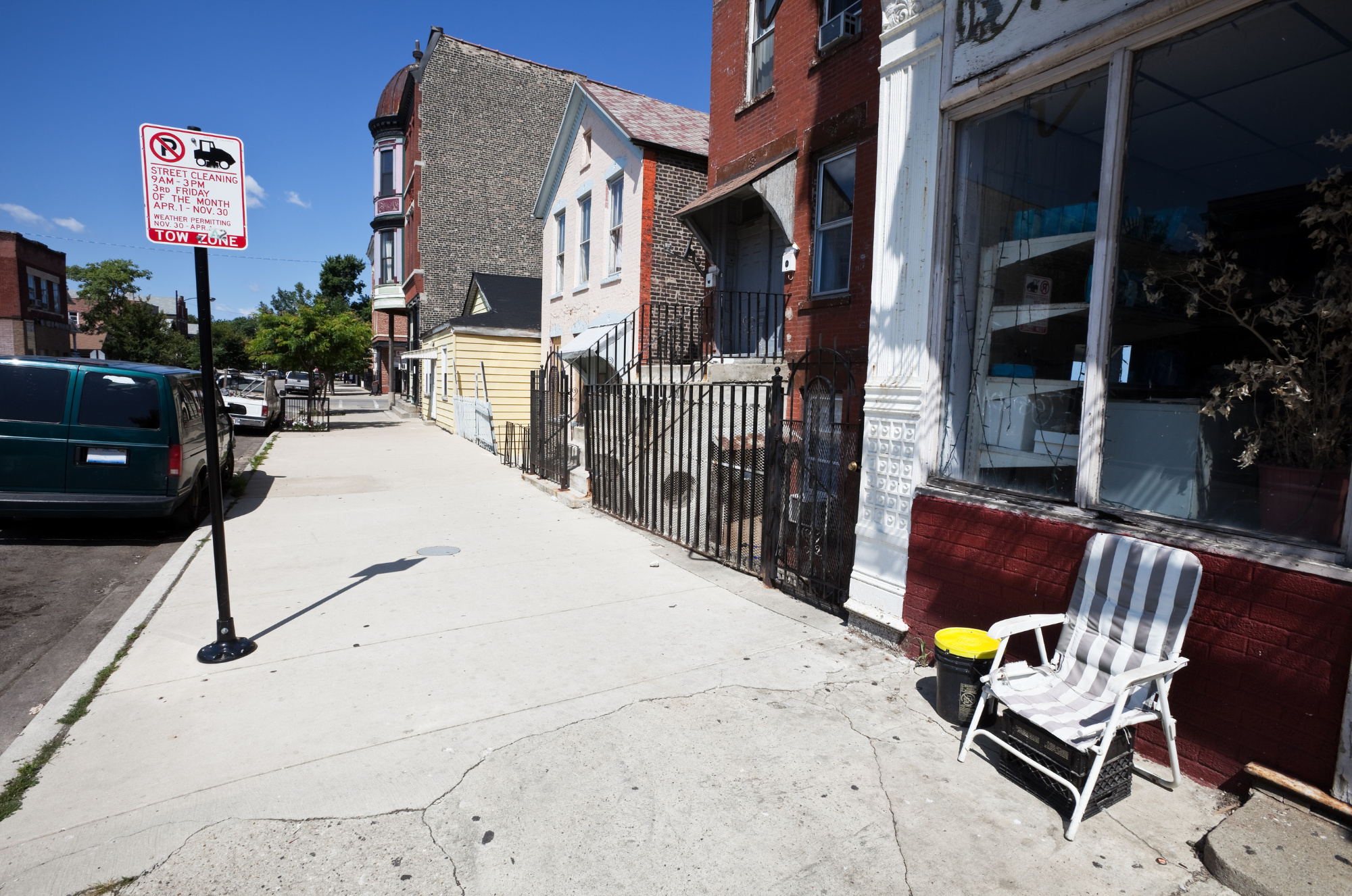
Pilsen: Where Eastern Europe Meets Mexico
Published on July 28, 2022
In the center of Pilsen sits Dvorak (Anton) Park. It’s fitting that the Lower West Side neighborhood boasts a tribute to the Bohemia-born composer of the “New World Symphony”. It’s not just because of the number of Bohemians who settled there but also because Pilsen, for most of its history, has been a place for those seeking a home in America.
Even with all the changes, Pilsen remains one of Chicago’s most vibrant neighborhoods, where Old World buildings meld with Mexican culture. Next time you’re there, take eATLAS’ Frida & Friends: Food & Art in Pilsen walking tour or Revolutionary Ride, a biking tour of public art in Pilsen and Humboldt Park that is available in English and Spanish.
The area that became Pilsen was first settled in the 1840s by Irish and German immigrants, who came to Chicago to build the Illinois & Michigan Canal, the Southwestern Plank Road (now Ogden Ave.) and the Burlington Railroad. Within a few years, an unsuccessful revolution for independence from the Austrian Empire caused many residents of Bohemia (now the Czech Republic) to move to the U.S. to seek religious and political freedom.
By 1860, a sizeable community had emerged just southwest of downtown. They called the neighborhood Prague, after the largest city in Bohemia.
With little public transportation to downtown, the growing neighborhood was largely isolated from the rest of the city. As a result, the locals were able to create a society that reminded them of their homeland. Churches, banks, schools and sokols (meeting halls) that catered to the Czech community sprung up, as did institutions for the agnostic Freethinkers that are closely associated with Bohemia.
Although other Eastern European immigrants settled in the area, Czechs were the most prominent. A tavern at S. Carpenter and W. 19th Sts. even bore the name “At the City of Plzen,” after Bohemia’s then-second largest city. The neighborhood soon took on the Anglicized version of Plzen: Pilsen.
The homes that were built in the neighborhood were similarly nostalgic. They were designed in the Bohemian baroque style, made out of brick with ornate cornices and carved limestone lintels. But after numerous Cholera and Typhoid outbreaks, the city realized an odd quirk among the homes. To fix the quirk and ultimately stop the outbreaks, the city began installing a sewer system. The first step of the installation required the streets to be raised 14 feet so that they were no longer at the level of Lake Michigan and the Chicago River; the next step involved raising the existing buildings and homes up to the new height of the street level. Many homeowners couldn’t afford to do that, so they built paths from the sidewalk to an entrance on the second floor, which now became the ground floor. You can still see many of those “sunken homes” in Pilsen.

Pilsen has held a prominent place in the history of Chicago. In fact, it was ground zero for one of the most epic and tragic events in our history.
137 W. De Koven St. was located in Prague, and all Chicagoans know what that means. For those who may not be aware, this was where you could find the cottage of Catherine and Patrick O’Leary. The Great Chicago Fire started on Oct. 8, 1871 in the O’Leary barn, a block away from the city’s first Czech Catholic church—St. Wenceslaus. Due to the winds blowing to the north that fateful night, the area west of Halsted was spared from the destruction, including St. Wenceslaus. The area then became a natural spot for the displaced residents of Prague to relocate.
The number of factories, lumber mills and rail yards nearby mean that there was plenty of work available. Pilsen stayed decidedly blue-collar, and the struggle for fair treatment by management put the neighborhood in the forefront of the burgeoning labor movement in Chicago. During the Great Railroad Strike in the summer of 1877, Pilsen became a key battleground in several violent clashes between protesters and police that left 30 people dead.
Nearly a decade later, on May 3, 1886, at least two people were killed when police shot picketers at the McCormick Reaper Plant at S. Blue Island and S. Western Aves. Another protest was arranged for the next day at the Haymarket in the West Loop. As police moved in to break up the rally, a bomb was hurled at the officers, who responded with gunfire. It’s believed that seven policemen and four demonstrators were killed at the Haymarket Affair, as it came to be known. The subsequent trial of the eight men accused of conspiracy became rallying points for labor activists around the world.
Women unhappy with sweatshop conditions at the Hart, Schaffner & Marx plant at the corner of W. 18th St. and S. Halsted Ave. walked off the job in September 1910. After about a month, the United Garment Workers of America got involved, leading to a citywide strike in the garment industry. Hart, Schaffner & Marx was the largest employer in Chicago at the time. The strike was settled in February 1911 after weeks of incidents between protestors, police and hired strikebreakers.

By 1910, the city had the third largest Czech population in the world, behind only Prague and Vienna. Czech independence finally came with the dissolution of the Austro-Hungarian Empire at the end of World War I. This led to a sharp decline in migration to the U.S. The population of Pilsen decreased over the next 30 years, as first- and second-generation Czech-Americans became more affluent and moved to nearby suburbs of Cicero and Berwyn. The de-industrialization of Chicago after World War II also hit Pilsen hard, and the neighborhood began to decay.
The election of Mayor Richard J. Daley in 1955 resulted in several public infrastructure projects. Among these projects were the construction of the Stevenson and Eisenhower Expressways and the University of Illinois-Chicago campus. The infrastructure projects, however, displaced thousands of Mexicans living on the Near West Side and south of the river. The combination of a large supply of apartments available at low rents made Pilsen a natural place to settle, both for the Mexicans already living in Chicago and for new immigrants. By 1970, Mexicans comprised a majority in Pilsen.
As the Czechs had done decades earlier, Mexicans transformed Pilsen in their cultural image. Murals brought color and expressions of Mexican pride to bare walls, and The National Museum of Mexican Art opened in 1982. Czech Catholic parishes begin to offer mass in Spanish, and Howell House—a settlement center for Czech immigrants that opened in 1905—became Casa Aztlan. Activists and residents organized against urban renewal projects that would force them to move yet again and to demand city agencies respond to their needs. The annual Fiesta del Sol has grown to become the largest Latino festival in the country and commemorates the two-year struggle to build Benito Juarez High School.
In 2000, the census revealed that 88.9 percent of the residents of the Lower West Side, most of which is comprised of Pilsen, identified as Latino or Hispanic. But over the next 20 years, the forces of gentrification have slowly been creeping in. In 2014, an ornate meeting hall and theater dating back to 1892, reopened. Thalia Hall is a venue that primarily features indie rock acts, and also houses three restaurants and bar concepts. This was a major signpost that Pilsen was losing its Mexican identity.
Despite having been listed as a Historic District on the National Register of Historic Places, 90 buildings in Pilsen were demolished between 2006 and 2020. In 2017, the new owner of the building that housed Casa Aztlan painted over the famous mural, which depicted Latino cultural icons. The ensuing outrage from longtime residents caused the owner to work with the original artist on a new mural and to create a children’s art program.
By 2020 only 70.3 percent of the area’s population were Latino or Hispanic, and 20.9 percent were white. A plan to turn a segment of Pilsen into a local historic landmark district faced widespread community opposition. The fear was that it would preserve buildings but lead to extra costs that would speed the gentrification process. It was unanimously rejected by the City Council’s Committee on Zoning.
In March 2021, the City Council voted for a one-year pilot program to impose a fee on any residential demolition permit in Pilsen. It’s credited with a 20 percent drop in demolitions in Pilsen and was extended to be in effect through 2024.

The Adventure starts when you say it does.
All eATLAS Adventures are designed and built by experienced eATLAS Whoa!Guides. They're always on. Always entertaining. And always ready to go.
Check out our Adventures!